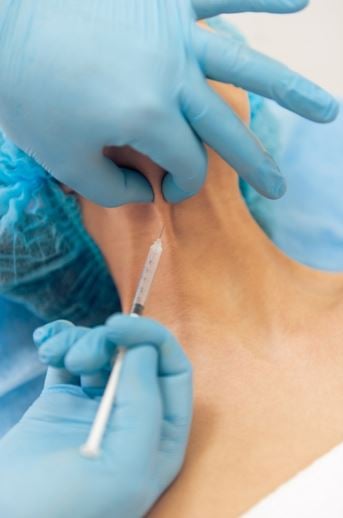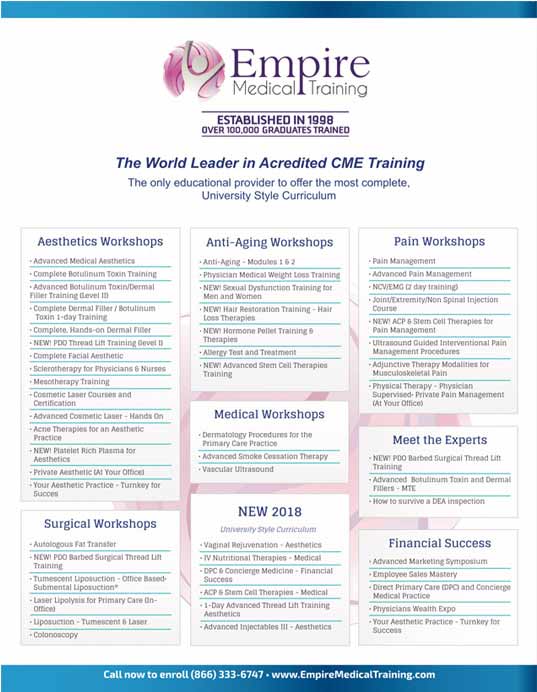Empire Rewards Wheel
- Browse Courses
Academy of Aesthetics
Academy of Business & Marketing
Academy of Functional Medicine
New 2025 Courses
Academy of Pain Management
Other Academies
- Plans
- Bundles
Learn More and Save!
- Memberships
All-Inclusive CME Plans
- Bundles
- Calendar
- Academies
- Academy of Aesthetics
Botox, Dermal Fillers, and More
- Academy of Functional Medicine
IV Nutrition, Hormone Pellet, and More
- Academy of Pain Management
Pain Show, NCV/EMG, and More
- Academy of Business & Marketing
Blueprint, Business Bootcamp, and More
- Academy of Cosmetics
Facial Aesthetics, Cosmetic Laser, and More
- Academy of Virtual
Learn From the Comfort of Your Home or Office
- Academy of International Training
A Global Community of Aesthetic Professionals
- Academy of Aesthetics
- Pricing
- About
- About Empire
Discover Our 27+ Year Legacy
- Contact Us
We're Here to Help With What You Need!
- Our Faculty
Explore World-Renonwed Educators
- Careers
Grow With Us
- Empire Studio
Your Production Solution
- Downloads
Get FREE Playbooks and Guides
- Resources
Explore Valuable Information
- Group Training
A Customizable Training Experience
- About Empire

















